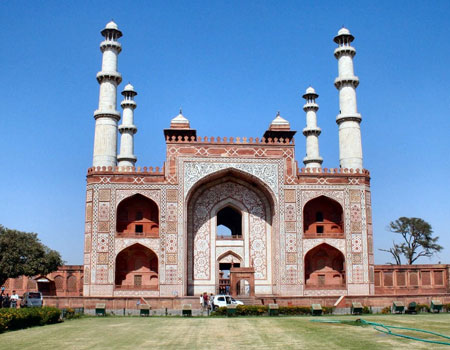AGRA
Places to visit
Taj Mahal
An immense mausoleum of white marble, built in Agra between 1631 and 1648 by order of the Mughal emperor Shah Jahan in memory of his favourite wife, the Taj Mahal is the jewel of Muslim art in India and one of the universally admired masterpieces of the world's heritage.
The Taj Mahal’s familiar marble domes are framed by four minarets from which Muslims are called to prayer. Each is designed with a slight outward lean, presumably to protect the main mausoleum in case one of them should collapse. Two red sandstone buildings also flank the main mausoleum on either side. These buildings are set within lush gardens, complete with an enormous reflecting pool that regularly does what no human has ever been able to accomplish.


Agra Fort
This UNESCO Word Heritage site is one of the most robust and important Mughal forts in India. After arriving in Agra in 1558, Emperor Akbar extensively rebuilt the fort using red sandstone. The process took eight years and was completed in 1573.
Akbar’s Tomb
This is one of the finest examples of Mughal architecture, where one of the greatest emperors in the world lies buried. Perhaps the greatest monarch India has ever seen and definitely the most powerful and able ruler of the Mughal dynasty, Akbar supervised the construction of the tomb himself during his lifetime. The rest of the tomb was completed by his son Jahangir after Akbar's death.



